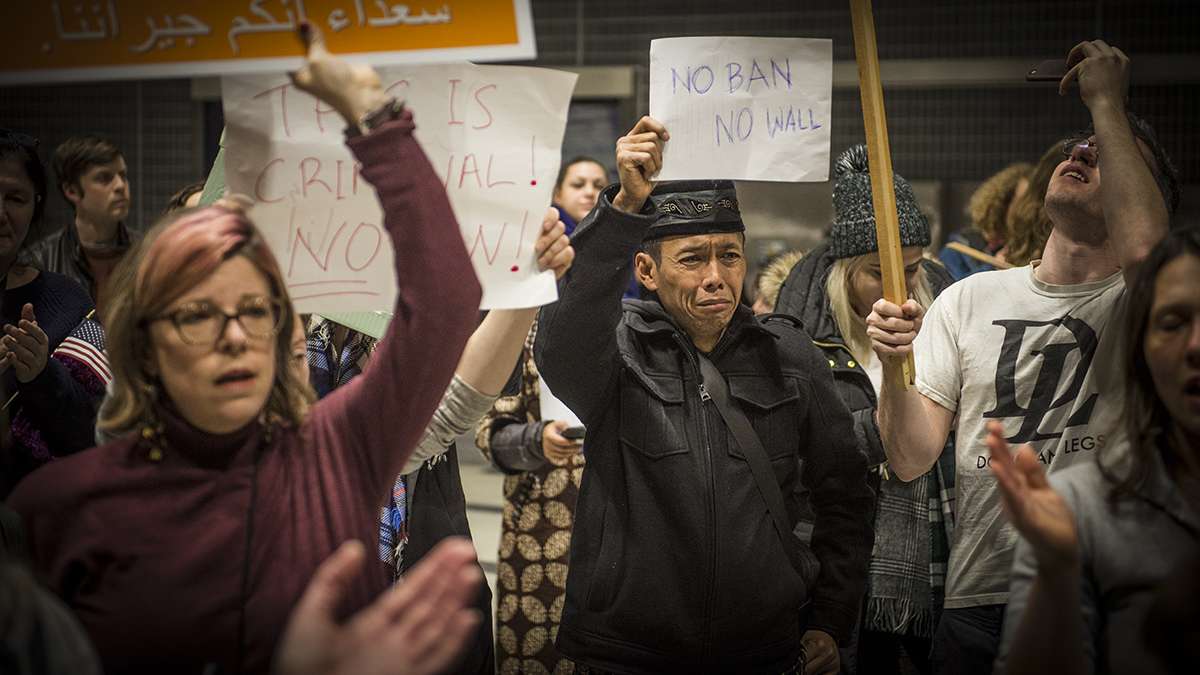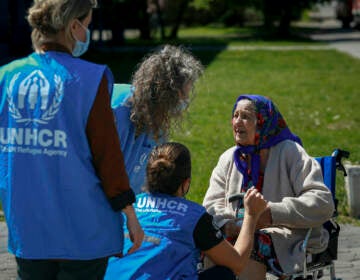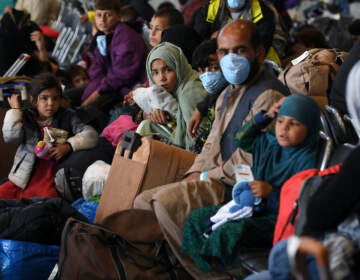As refugee arrivals fall by two-thirds in Pa., program changes likely to further slow travel
Data from the midway point of this fiscal year show the U.S. and Philadelphia region are far off pace to reach the federal 45,000-refugee ceiling.

Protesters angered by President Donald Trump's 2017 executive order that prevented refugees, visa and green card holders from entering the U.S. rally at Philadelphia International Airport. (Branden Eastwood/for WHYY)
When Peter Gottemoller looks at his calendar for pending refugee arrivals in April, all he sees are blank days.
Under President Donald Trump’s refugee cap of 45,000, Gottemoller planned for 100 arrivals in fiscal year 2018, an average of about eight a month.
“If we’re halfway through the year, and I’ve only got a quarter of my slots [filled] and no travel for April yet, which is kind of unusual, I know I’m not going to reach 100,” said Gottemoller, who directs refugee programs for Bethany Christian Services in Philadelphia.
Trump’s refugee ceiling, a number that usually functions as a goal but not a quota, was already the lowest cap in decades. After 9/11, President George W. Bush suspended the U.S. refugee program temporarily, but left the cap at 70,000 people.
Data from the midway point of this fiscal year shows the U.S. and Philadelphia region are far from reaching the 45,000-person ceiling. Between April 1 and Oct. 1 of 2017, Pennsylvania resettled 530 refugees, down from 1,437 during the same period the previous year, according to the U.S. State Department’s Refugee Processing Center.
The reasons for the drop are many. The American refugee program sputtered last year — stopping and starting due to executive orders and court cases. That created a “a big mess, a big backlog,” said Stephanie Gromek, development and communications coordinator for Church World Service in Lancaster.
There are more than a dozen steps in the refugee vetting process, and “each one of these steps has an expiration date attached to it,” said Gromek. “Once it expires, you have to go through the whole process over again.”
Those already in the pipeline — including 86 refugees slated to arrive in Lancaster last summer — can lose their security clearances if the process is interrupted, forcing them to start over.
On Oct. 24, the federal government reopened its refugee program with changes. They included requiring refugees to provide home addresses for the last 10 years — previously, only five years of addresses had been required— and share the social media handles of their family members. Stricter national security checks were expanded to new groups of refugees, such as people seeking to join family members.
“All refugees undergo the most intensive security screening of any traveler to the United States,” according to the State Department website.
Federal officials acknowledge that these changes will slow down an already tedious process.
“The implementation of new security vetting procedures, while necessary, has lengthened processing times,” said Jane Cowley, spokeswoman for U.S. Citizenship and Immigration Services, which oversees parts of refugee screenings. “Processing times may be impacted by a number of other factors as well, such as [the organization’s] operational capacity.”
Administrators of refugee resettlement agencies say fewer federal employees are conducting interviews at refugee camps, a necessary step in the vetting process. That is further gumming up the gears.
“When you add all these things up, it makes sense that things aren’t moving the way they should,” said Margaret O’Sullivan, executive director of Nationalities Service Center, which resettles refugees in Philadelphia. Her group has a family of eight set to arrive from Ukraine in April — and no one after that.
WHYY is your source for fact-based, in-depth journalism and information. As a nonprofit organization, we rely on financial support from readers like you. Please give today.





